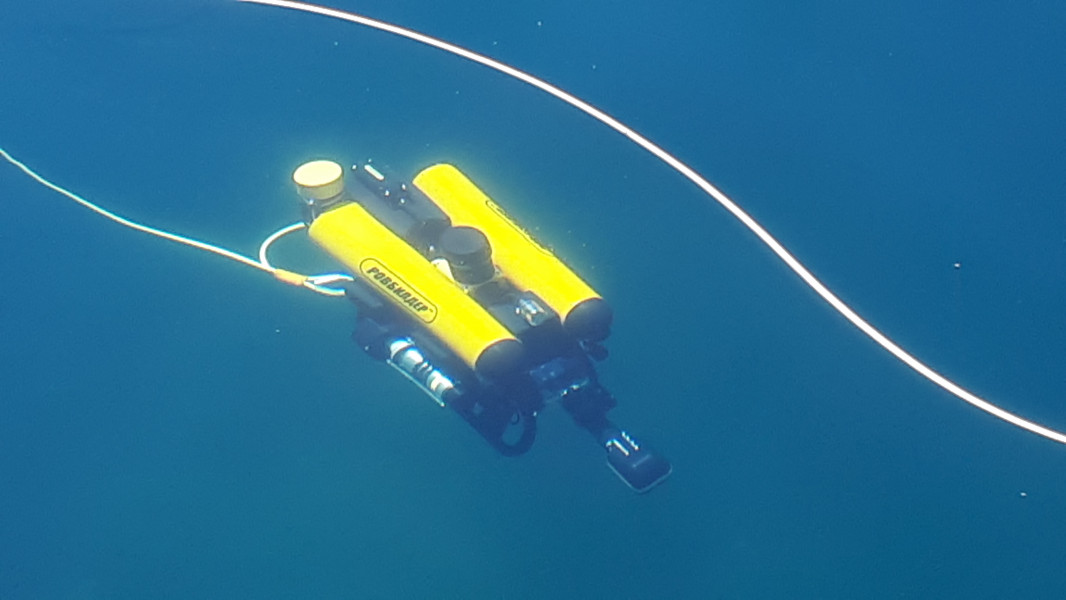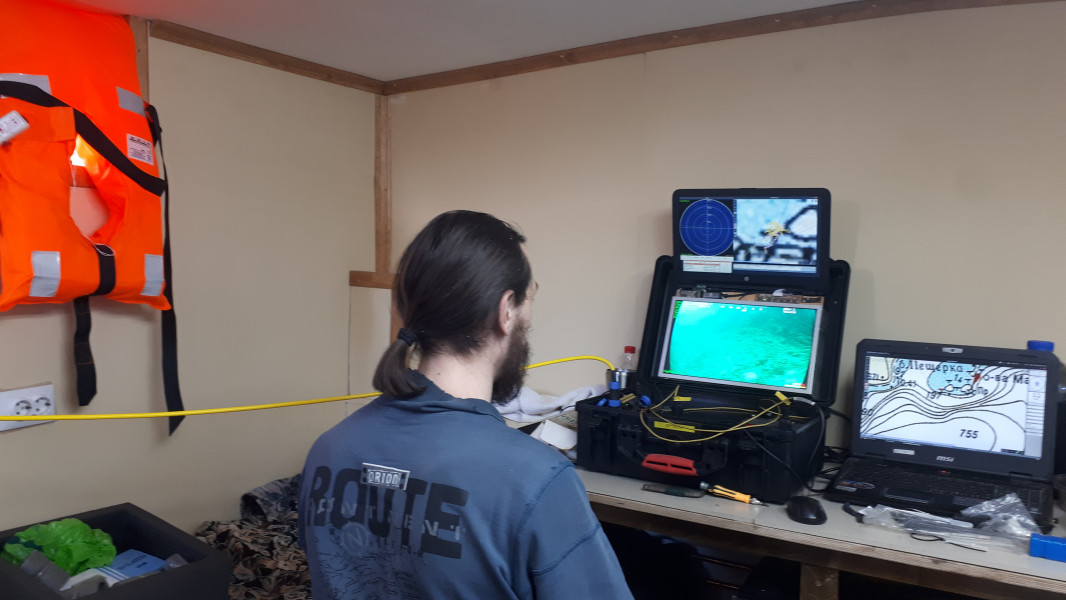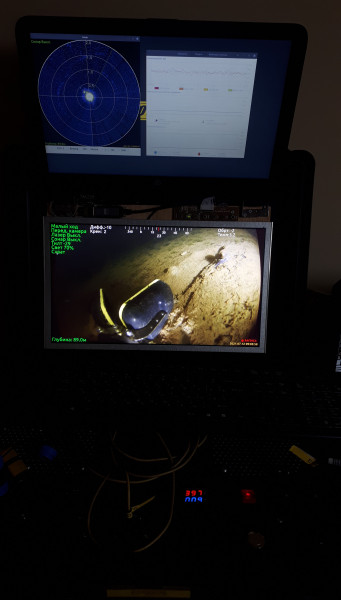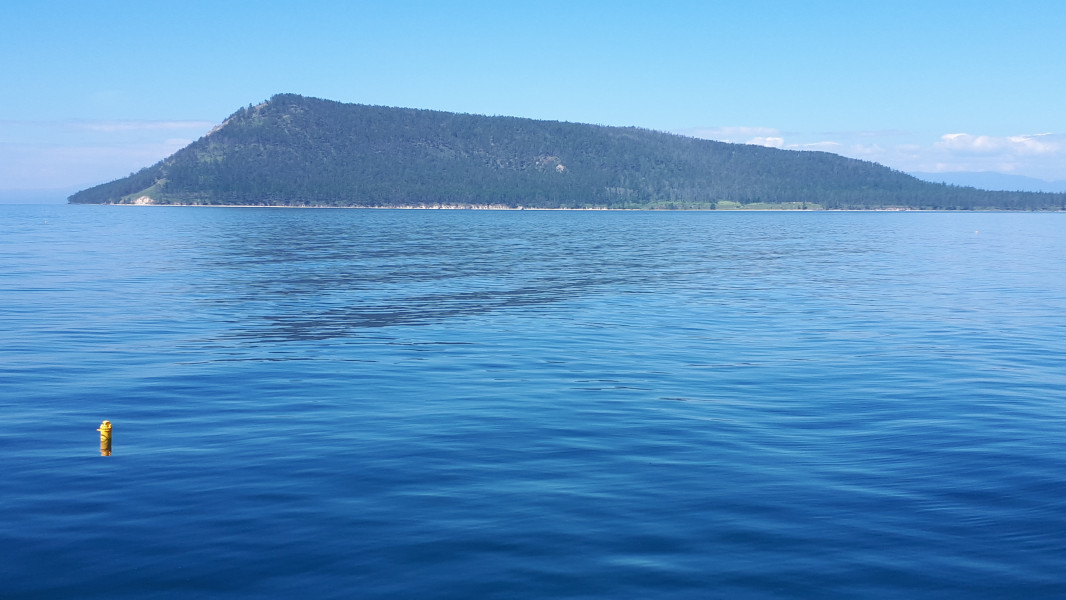Expedition on board the RV “Papanin” from 8 to 12 July 2021
The expedition onboard the RV “Papanin” was carried out from 8 to 12 July 2021 along the southern and central basins of Lake Baikal. The expedition team tested a Rovbilder remotely operated underwater vehicle (ROUV) (Russia) of the hydroacoustic underwater navigation system “Laboratory of underwater communication and navigation” (Skolkovo), carried out a scientific search using bottom trap nets and sampled benthic organisms with a bottom grab.
During the expedition, more than ten submersions were carried out: two to three submersions per day to a depth of down to 200 m lasting from 30 minutes to 4 hours. The ROUV is equipped with a manipulator that can be removed by installing “cups” or “grippers”. Thus, for solving specific tasks (ground sampling or lifting hydrobionts), the most suitable tool can be used. A scanning sonar installed in the upper hemisphere of ROUV provides observations of underwater objects (bottom slopes, stone fields, etc.) at a distance of up to 50 m, which primarily facilitates underwater orientation and increases the safety of the ROUV submersion. The expedition team carried out test dives using underwater navigation that is hydroacoustic buoys drifting on the surface, which transmit hydroacoustic signals, and a hydroacoustic revceiver of navigation information installed on the ROUV. This kit provides real-time observations of the position of the ROUV on the plane in geographic coordinates, which contributes to facilitating underwater navigation, targeted sampling, increasing submersion safety, etc.
It was planned to sample bacterial mats near the site of gas bubble seepage to study the metabolic processes in microorganisms that form bacterial mats. During the ROUV submersion near the Bolshoye Goloustnoye settlement at a depth of about 200 m, there were gas bubble seepages. Close to the emergence of bubbles, the soil looked looser, and hanging edges were visible similar to those observed during dives on the MIR submersibles in the area of near-surface gas-hydrate deposits. The soil sampled by the manipulator contained many filaments of the colourless sulfur bacteria of the genus Thioploca forming lumps. The filaments were washed with sterile water and collected for further analysis. When the ROUV was submerged again, it could not find this bubble leakage, and the soil sample from a radomly selected site contained only three filaments of Thioploca.
The ROUV was used to collect samples of benthic animals (sponges, gastropods and bryozoans) at depths of 70 to 200 m for a detailed molecular genetic and ecological analysis of the representatives of deep-water fauna via modern research methods. Despite more than 100 years of research of deep-water fauna since its discovery in Lake Baikal (W. Dybowski, 1875; B. Dybowski, 1902), the knowledge about biology, origin and evolution of organisms inhabiting deep-water areas of Lake Baikal remain scarce and fragmentary, which is due to the difficulties of catching. Invertebrates in the abyssal zone of the lake were mainly sampled using ichthyological trawl and from the deep-sea manned submersibles, Pieces and MIR. When the deep-water fauna was collected using a grapple bucket, it was found that can hardly take large invertebrates. During this expedition near the Maloye More Strait and in the southern basin of Lake Baikal, the ROUV collected the members of a “giant” endemic gastropod species, Benedictia fragilis, distributed in a wide range of depths (from the sublittoral zone to the abyssal zone). Also, during the four-hour diving, the ROUV obtained the first data on the speed of movement of B. fragilis. The previous molecular biological studies of B. fragilis (Teterina et al., 2017; Maximova et al., 2017) were carried out only for trawl samples from the northern and central basins of Lake Baikal, but in the southern basin, due to difficulties in trawling caused by the peculiarities of underwater topography, it was not possible to collect molluscs of this species. Thanks to the data obtained in the expedition, the complex analysis of B. fragilis will be carried out, and the information about their genetic diversity, distribution and evolution will be added.
Scuba divers from Limnological Institute SB RAS sampled Baikal endemic molluscs of the family Baicaliidae, which were collected at three stations in a depth range from 10 to 35 m, to study their morphological and genetic variability as well as to search for traces of interspecific hybridization and introgression among closely related species in sympatric zones. The Hislopia placoides byozoans were collected at four stations along the western coast of Lake Baikal in a depth range from 10 m by scuba divers to 71 m using the ROUV. H. placoides is the only species of bryozoans, which inhabits open littoral zone of Lake Baikal and migrates to depths of more than 100 m. The samples were fixed for further morphological and molecular genetic analysis and comparison with the members of H. placoides living outside Lake Baikal and the Baikal region. The obtained data can be used to study the history of the formation of the Baikal fauna.







